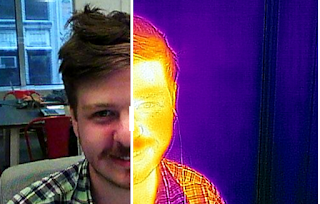OUR INPUT AND OUTPUT DEVICE
OUR INPUT AND OUTPUT DEVICE : HEATO
Your phone can see in
the dark and measure heat with this attachment
Phone cameras have gotten extremely powerful. The one in
your phone right now can capture your kid's quick moves at the soccer game,
take day-spanning time-lapses, and it probably has a chance to take a decent
picture in low light. Maybe it can even stabilize the image to protect your
photo from your shaky hands.
But it can't see in the dark, and it definitely can't help
you see if you undercooked your food. The Heato let you do those things by
turning your phone into an infrared camera.
Heato has been doing thermal imaging for decades. Its
infrared cameras are used on military aircraft, by first responders, and it
even provides the cameras that capture those wild thermal views of Formula One
cars. the phone contains two cameras: one that sees infrared light, and one
that sees visible light using a low-resolution, 640x480 CMOS sensor. The app
embosses the edge detail captured by the visible light sensor and lays it over
the thermal image in real time, giving detail to the colored blobs of infrared
information.
You can use the Heato to get a live look at the difference
in temperature range of a particular scene or object, or measure the
temperature of a particular spot. The app has photo, video, time-lapse, and
timer settings, too. The most obvious applications seem to be in home
improvement and repairs. You could use the Heato to identify or locate a leak,
spot drafty windows and doors, and see through smoke and fog. Because of its
ability to see in the dark, it could also be used as a security monitoring
device.
Impressive camera technology is only as good as the
corresponding software. The Heato app works just fine and it hides a few clever
tricks. For example, any time you measure the temperature when you take a
picture, you can drag a crosshair icon around to read the temperature of other
objects in that image after the fact. You can also drag your finger across each
image and slide between the thermal and regular views. There's an option to set
a custom temperature range, too, which is helpful if you're looking for
specific variations in heat.


Comments
Post a Comment